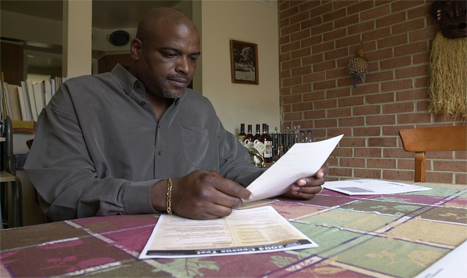
By Kimetha Hill
Staff Writer
In 2012, there were 46.5 million people living in poverty.
On the anniversary of President Lyndon B. Johnson’s declaration of “War of Poverty” the U.S. Census has released a timeline of major milestones since the mid-1960s on how poverty in the United States is, and has been defined.
President Johnson’s 1964 declaration of “War on Poverty” sparked the creation of an official measure of poverty. His declaration came in response to the alarming national crisis that 19 percent of Americans were living in poverty. Over the past half-century and beyond, the rate of poverty has fluctuated, however current numbers rival some of the highest percentages in history.
In May of 1965, the Office of Economic Opportunity adopted Mollie Orshansky’s poverty threshold as a working definition of poverty for statistical planning. In 1967, the first full Census Bureau report on the subject of poverty was issued, displaying poverty statistically on a national level. In the mid-1990s, the Panel on Poverty and Family Assistance published a report which proposed a new approach for measuring poverty. View a full historical timeline here: http://www.census.gov/how/infographics/poverty_measure-history.html
It is important to note that the Official Poverty Measure does not reflect the key governmental policies enacted since its inception to help low-income individuals meet their needs. In 2010, the Census Bureau began releasing poverty statistics using the Supplemental Poverty Measure. There is a marked difference between the Official Poverty Measure and the Supplemental Poverty Measure; while the OPM assumes all individuals residing together are related in some way whether by birth, marriage or adoption and share income; SPM accounts for the family and factors in other nonrelated persons including foster children or unmarried partners.
The way in which needs are measured and poverty is determined has certainly evolved over the years.
The poverty threshold, or poverty line, is the minimum level of resources deemed adequate to meet basic needs. Looking at 1963 from today’s standards, the official measure used three times the cost of a minimum food diet in today’s prices. In 2012, SPM factors in what society spends today in terms of food, clothing, shelter and utilities.
Another important piece to study is how poverty is measured across different cities in the United States.
For example, under the OPM, the threshold is the same throughout the country. But under the SPM, thresholds are based on varying circumstances including cost of living, place of residence and whether it is a rental unit or purchased property or a home with a mortgage.
The differences between the OPM and the SPM provide varying factors and resources, and allow us to view a more complete picture of poverty in the United States. For more information on a statistical poverty breakdown across varying measurements, please visit the Census Bureau at http://www.census.gov/hhes/www/poverty/.


